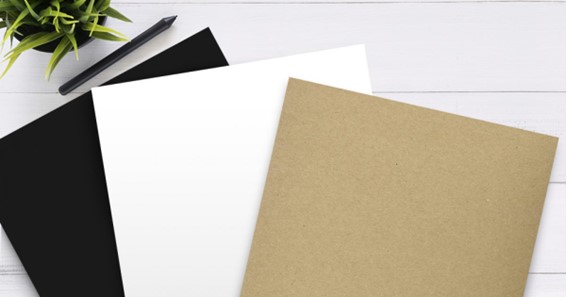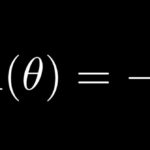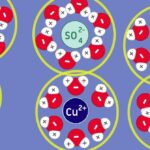Have you ever wondered what is chipboard? Many paper converting experts receive a lot of questions about its uses and application. People often reach out wanting to order a chipboard for a particular project before even understanding it. It is a very versatile product that can be converted for a variety of uses. In my article, I have discussed some important facts about the chipboard that you must know. Continue reading to know more about what is chipboard and its multiple uses. Without wasting any time let’s get started!
What Is Chipboard?
Chipboard is a thick fabric paper made from recycled paper. It is made by mixing small wood particles with epoxy resin. Sometimes, chipboard is also referred to as Particleboard or low-density fireboard. As you got to know what is chipboard, let us see how actually it is manufactured.
Types Of Chipboard
Following are the types of chipboard that you must know.
- Pressed chipboard: These chipboards have sufficient strength. They are used as structural materials in constructing furniture.
- Laminated Chipboard: It is pressed board-lined chipboard with a laminated coating of resins.
- Moisture Resistant Chipboard: It is moisture-proof chipboard that is commonly used in humid conditions.
Chipboard Properties
Above you have studied what is chipboard now let us know the properties of the chipboard that I have mentioned below.
-
Composition
Chipboards are made up of wood chips that are bonded together with resin and pressed into a flat, rectangular shape. In this, the pieces of wood are mixed with sawdust. A synthetic resin is added to hold the chips together in place. This adds strength and hardness to the finished product.
-
Thickness
The standard chipboard thickness is 30pt or 624 gsm.
-
Density Of Chipboard
Chipboard is normally available in three types- normal, medium, and high density. Normal density chipboards are soft and easy to work with. While high-density chipboards are very hard and heavy. The density of the chipboard normally ranges from 550 to 820 kg/m3.
-
Water Vapor Permeability
Permeability of water vapor is the most important characteristic of the clipboard. It comes with a permeability of 0.13 mg/(m.h.Pa). A good vapor permeability will help in the removal of moisture from the wall.
-
Thermal Conductivity
The average thermal conductivity of the chipboard is 0.15 W/ (m. K). It totally depends upon the thickness of the chipboard.
-
Biological Stability
The biological stability of the chipboard is quite high. They are not easily damaged by insects or the fungus. Sometimes, the chipboard can completely break down because of moisture, but it will never rot.
Click here – Oat Bran Vs Oatmeal? Health And Nutrition Benefits
Chipboard Sizes
Chipboards come in a wide array of standard sizes that are suitable for any crafting projects. Here is the standard chipboard sizes chart.
- 3 x 5 inches
- 4 x 6 inches
- 5 x 7 inches
- 6 x 9 inches
- 8 x 10 inches
- 8.5 x 5.5 inches
- 8.5 x 11 inches
- 8.5 x 14 inches
- 11 x 17 inches
- 12 x 12 inches
- 12 x 18 inches
The smallest chipboard is 3 x 5 size is great for small projects like cards. The larger size chipboard 11 x 17 inches is great if you want to create signs and other large-scale projects.
Uses Of Chipboard
You must be wondering what are the uses of chipboard? Chipboards can be used for all kinds of different interior building and decorating projects. I have mentioned down some common uses of chipboards for you.
- Kitchen worktops
- In basic structures of kitchen cabinets.
- Flooring
- Flatpack furniture
- Building insulation
- Packaging
- Interior Doors
- Bookmaking
- Book Covers
- Scrapbooking
- Crafts
- Written desks
- Computer desks
- Cabinets
How Is Chipboard Made?
There are several steps involved in manufacturing chipboard. Below I have mentioned the detailed manufacturing procedure of the chipboard.
Step 1: Raw Materials And Pretreatment
You know that Chipboard is a wood product made from wood waste. Collect sawdust and wood chips that are produced during the manufacturing of other wood products. These are the raw materials used for manufacturing the chipboard. They are then separated according to their sizes and sent into the chipper.
Step 2: Chipping, Drying, And Screening
The chipping process reduces the wood waste to a uniform size. The wood chips are sent to a dryer once the chipping process is completed. This dryer process ensures the wood chips are at the appropriate moisture level. The chips are further screened to separate the chips into uniformly sized collections.
Step 3: Gluing And Chipboard Formation
The application of synthetic resins and additives is involved in the gluing process. The chips are then ready for the formation of the chipboard. It consists of a layered of bigger chips and smaller wood particles forming the outer layer. The chipboards are then sent to the press after they are arranged according to the desired specifications. An adhesive is applied with the help of heat and pressure.
Step 4: Pressing
A high-temperature press is used to form the boards with the desired thickness once the cooling process is completed. Pressing of the board ensures that the glued particles stick together tightly creating a strong bond. This ensures that the material stays together as one cohesive product.
Step 5: Post-Treatment
In post-treatment, the chipboard surface is sanded to produce a smooth, uncoated surface. The chipboard is cut into the desired dimensions after sanding. The product is then ready for storage and shipping. One more additional process called laminating is also used depending upon the use of the chipboard. Laminating applies a decorative layer of paper material to the chipboard.
Advantages And Disadvantages Of Chipboards
Below I have mentioned some advantages and disadvantages of the chipboard.
Advantages
- They are reasonably priced.
- Chipboards are more environmentally friendly.
- A variety of finishes are available in chipboards.
- Chipboard is a sturdy and durable material.
Disadvantages
As you got to know the advantages let us also see its disadvantages too.
- Chipboards hold any moisture.
- It swells and becomes unstable if left wet for a long time.
- They always leave a rough edge if not cut properly.
What Is Chipboard Sheet?
Chipboard sheet is a type of paperboard made from recycled paper. This recycled paper is then pressed and glued together to make a solid structure. Their durability and lightweight make it perfect for a number of applications. Chipboard sheets can even be painted. You will find a variety of color options in this. Below I have mentioned down the most common uses of chipboard sheets for you.
- Gift packing
- Carpentry projects
- Making games for children
- Making toys for children
- Crafting small bulletin boards for your home or office.
What Is Clipboard Scrapbooking?
Scrapbooking is the most popular way to use chipboard in your crafting projects. Chipboards are very flexible in nature. So, it is also a great choice for scrapbook pages. You can use it to create your own scrapbook covers rather than using a book with its own binding. The clipboard can hold the binder rings or ribbons of scrapbooks together.
FAQ
What Is A Chipboard Used For?
Following are the different uses of chipboards that you must know.
- Kitchen worktops
- In basic structures of kitchen cabinets.
- Flooring
- Flatpack furniture
- Building insulation
- Packaging
- Interior Doors
- Bookmaking
- Book Covers
- Scrapbooking
- Crafts
- Written desks
- Computer desks
- Cabinets
Is Chipboard The Same As Cardboard?
Yes, in many ways chipboard is similar to cardboard. Chipboard is a type of non-corrugated cardboard.
What Is Craft Chipboard?
Craft chipboard is a pressed paperboard that is made by gluing fragments and layers of recycled paper together.
What Is Chipboard Made From?
Chipboard is manufactured by mixing particles of wood chips together with resin, which is then pressed. Because of this, the product becomes rigid and smooth to touch. This ensures that the material stays together as one cohesive product.
Is Chipboard Better Than MDF?
MDF board is much more durable and long-lasting than chipboard produced with sawdust, as it is obtained by combining thick wood residues and wood with resin and glue and pressing under very high temperature and pressure.
What Can I Use Instead Of Chipboard?
I usually use mat board for things like this. A framing or craft shop should have uncut sheets. It is easier to cut than chipboard too. The regular stuff (4-ply) is about 1.5 mm so you could glue two together.
Is Chipboard A Cardboard?
Cardboard is a general term for a variety of thick paper-based materials, including corrugated and chipboard. Cardboard ranges from single-ply paper to multi-layer corrugated.
Is Chipboard Stronger Than Plywood?
Both materials provide a good strength yet the plywood being made out of continuous layers of wood is a lot sturdier when heavy items are dropped. Most of time if the impact fall between the joists over the clear chipboard this will break it.
Why Is Chipboard Cheap?
A: Chipboard is generally cheaper than plywood because it can be made from wood waste products. Plywood, on the other hand, is made from full-sized sheets of fine wood, making it more expensive to manufacture.
Conclusion
In my above article, you have learned what is chipboard and its properties. They can be converted for different uses, from industrial and commercial to crafting and hobbies. It is a sturdy and durable material that will protect your shipping items from being damaged. Chipboards also offer several advantages and disadvantages. Start designing your furniture as of now you have learned what is chipboard along with its multiple uses.
Click here – How To Become A Zoologist?






